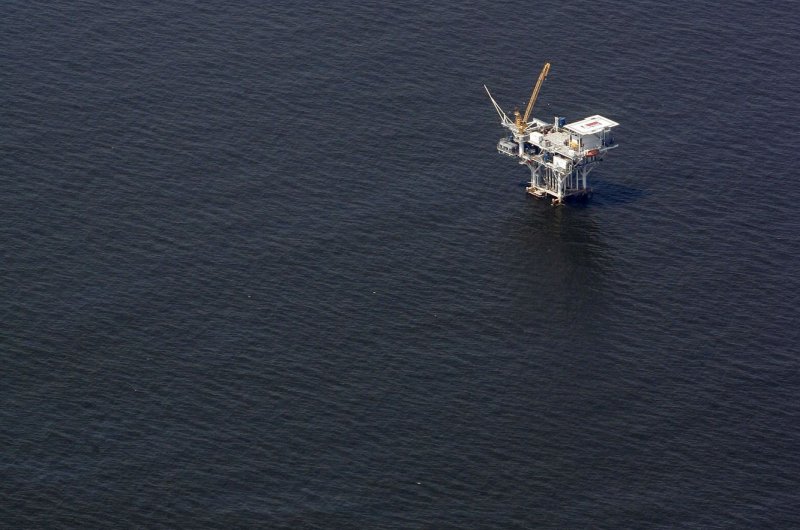An above-average hurricane season in the Atlantic Ocean is expected this year, but U.S. oil could be buffered because of inland production centers. File photo by A.J. Sisco/UPI |
License Photo
May 26 (UPI) -- An above-normal Atlantic hurricane season could be a problem for the U.S. energy industry, but data show shifting production patterns may spare oil.
Meteorologists with the National Oceanic and Atmospheric Administration's Climate Prediction Center said this year's hurricane season in the Atlantic, which extends from June 1 through Nov. 30, is more than likely to be active. There's only a 20 percent change for a below-normal hurricane season and a 70 percent chance of at least two major hurricanes, classified as a Category 3 storm with winds stronger than 110 miles per hour.
"Regardless of how many storms develop this year, it only takes one to disrupt our lives," Robert J. Fenton, Jr., the acting head of the Federal Emergency Management Agency, said in a statement.
An average hurricane season produces 12 named storms and as many as 17 are expected this year.
Hurricane Matthew was a Category 3 storm when it hit the east coast of Florida in early October. The U.S. Energy Information Administration estimated about 2.5 million residential, commercial, and industrial electricity customers lost power across five states because of Matthew.
Motor club AAA reported that Matthew forced the closure of fuel terminals in Florida, Georgia and South Carolina. Most of the coastal ports reopened in the region by the time remnants of Matthew moved out to sea, but the storm caused short-term gasoline shortages and skewed the national average price at the pump higher.
Jonathan Leitch, a research director for refining and oil product markets for Wood Mackenzie, said there may be short-term spikes in gasoline prices should a major storm develop this year, though refineries have been largely spared in the past.
"This is largely due to luck where, even in very active seasons, the paths of hurricanes have not crossed over the densely packed area of refineries along the U.S. Gulf Coast," Leitch told UPI.
However, according to Genscape, which monitors market supplies, Hurricane Hermine sidelined about 1.2 million barrels of offshore production and 4.1 million barrels of imports after it made landfall in Florida in early September.
This year's season got off to an early start when Arlene became only the second such tropical storm observed in April in the Atlantic Ocean. Forecasters for the U.S. National Hurricane Center said that detecting a storm as weak as Arlene was "practically impossible" before the modern weather-satellite era, however.
A report from the Energy Information Administration in 2013, a below-average year for the Atlantic hurricane season, found the disruption to regional oil and gas production had declined because of the shift inland for production centers.















